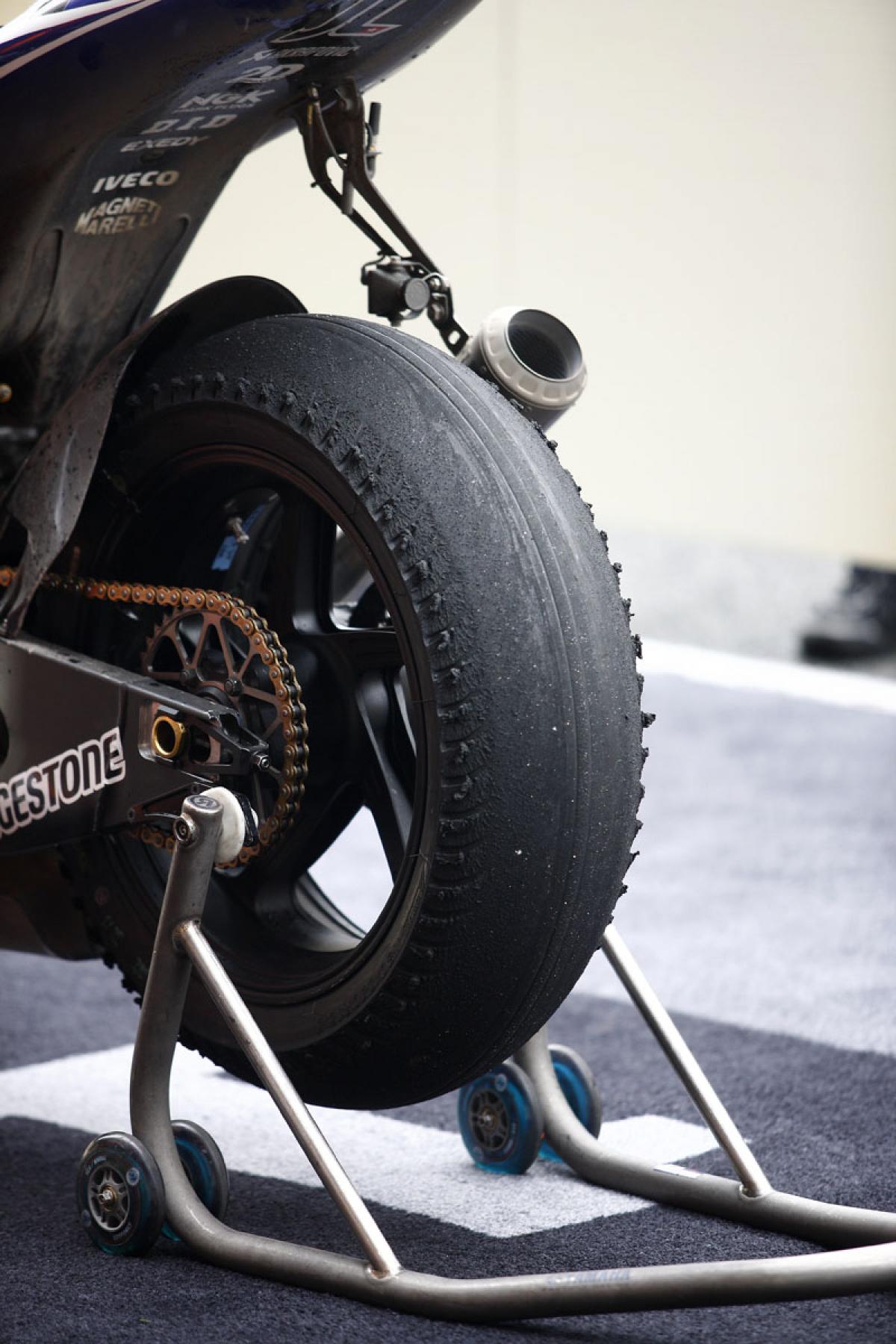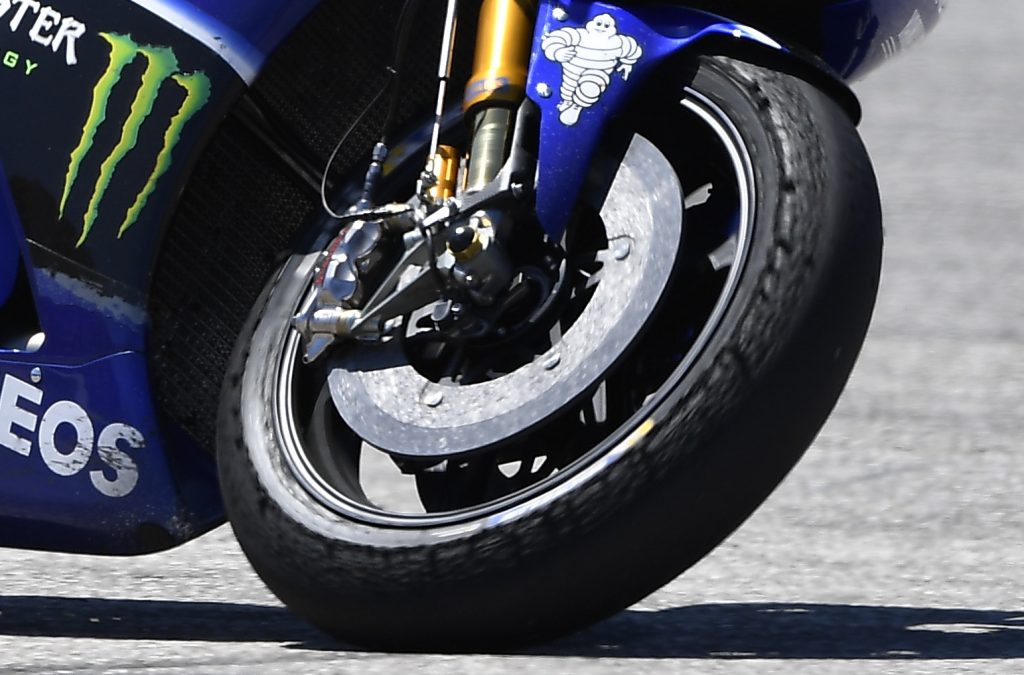Tires are the most well-known situation where friction changes as a function of temperature. Before 1974, road motorcycles used only all-season tires, their running surfaces crisscrossed by numerous grooves to drain water. Flexing the resulting tread elements as they pass in and out of the tire footprint helps bring these tires up to operating temperature. Rubber is not 100% elastic. Warp it with 100 units of energy and when you release it you can only recover 75 units. The other 25 units become heat in the flexible rubber itself. This is how the tires warm up.
Road tires reach operating temperatures quickly due to the flexing of the tread and carcass elements.

Heating blankets help keep tires at the ideal temperature
Slick tires are different because their tread does not have any drainage grooves. Very inflexible, they warm up much more slowly, whereas racing tires are essentially useless until they are warm enough for their rubber-road dynamics to work properly. Crashes on the first lap were rife until the drivers were allowed to do warm-up laps. Subsequently, heating blankets provided additional protection, keeping the tires at around 80°C before departure. The rubber being hot, this limits the risk of falling on the first lap.
Slick tires
Slick tires therefore heat up more slowly and need heated blankets to keep them at operating temperature before hitting the track.
Why should friction vary with temperature? A primary mechanism of friction is the continued formation, stretching, breaking, and reformation of adhesive bonds between myriad tiny contact points on surfaces moving in front of each other. Imagine a ship, its deck loaded with people, gliding slowly along a pier on which hundreds of others stand. Departing travelers on the ship and people on the pier hold hands as long as they can, holding each other, exerting forces from dock to ship. But then their hands are pushed aside by the continued movement of the ship, and they reach out to grab the other hands in turn.
If we imagine rubber and bitumen instead of people, it becomes clear that the process of rapid formation of new bonds must be temperature dependent, because rubber becomes stiffer when its temperature is low. At its glass transition temperature, it becomes a very rigid solid! Too stiff to follow the cycle of adhesion, stretching, fracture and re-adhesion which is the primary mechanism of friction. This is why racing tread rubber needs to be warmed up before racing to help it perform during the first few laps of races.

Sometimes racing tires have abnormal wear
Why road tires don't have these problems The glass transition temperature of the racing tire should be set high enough to maximize grip in the desired temperature range, but the glass transition temperature of the road tire is set low enough to ensure safe operation in all weathers.
The same behavior of adhesion, stretching, fracture and re-adhesion occurs between the brake pad and the brake disc, and between the clutch housing and the steel discs. The details of how friction varies with temperature depend on the material mixtures used.




























